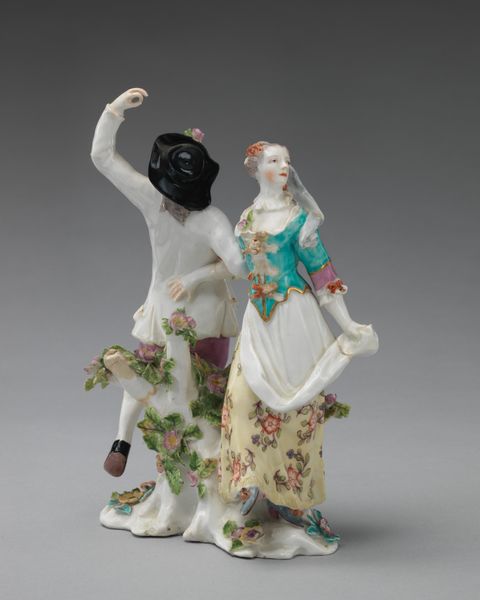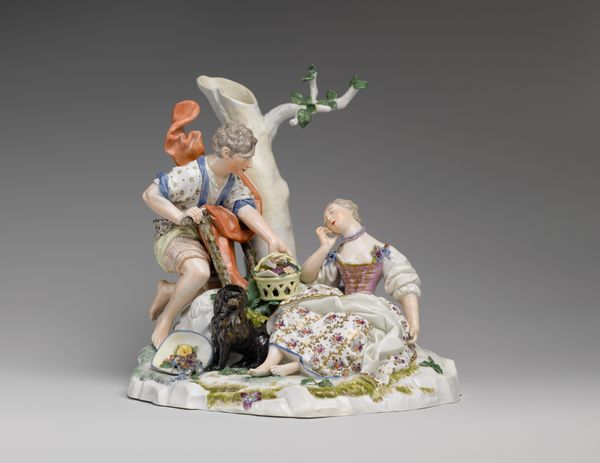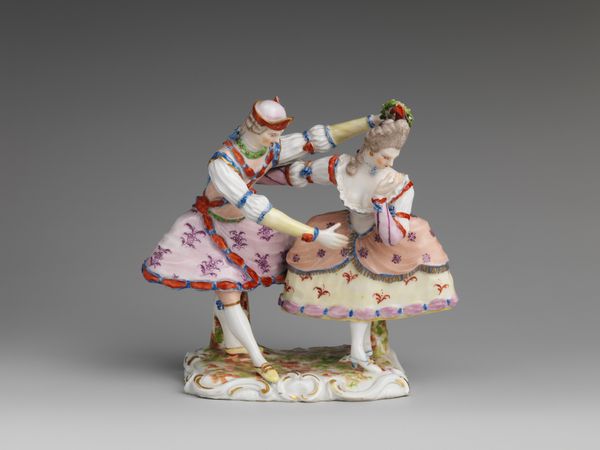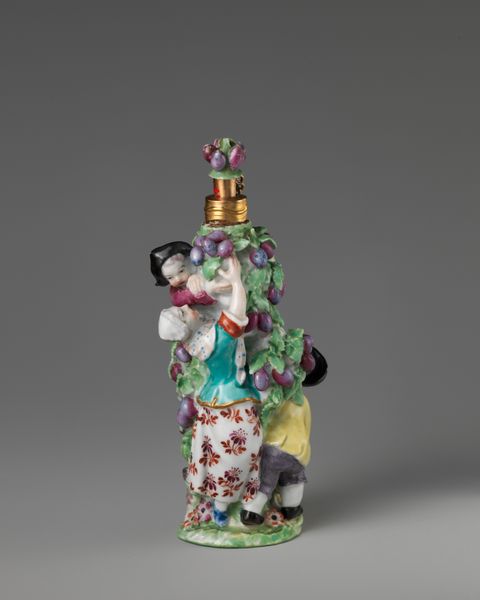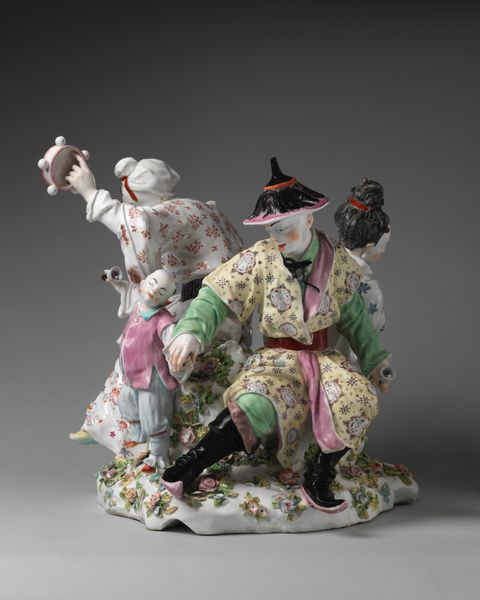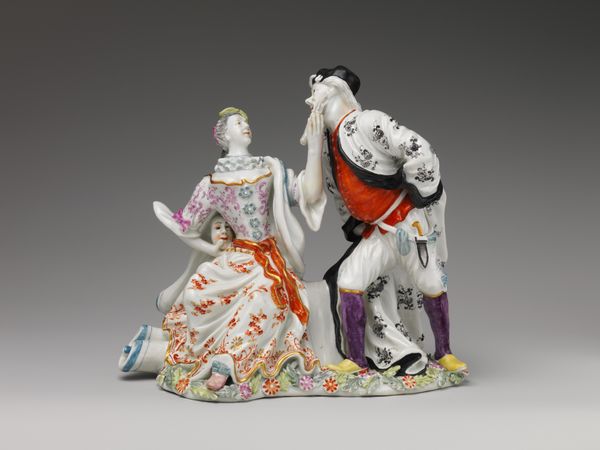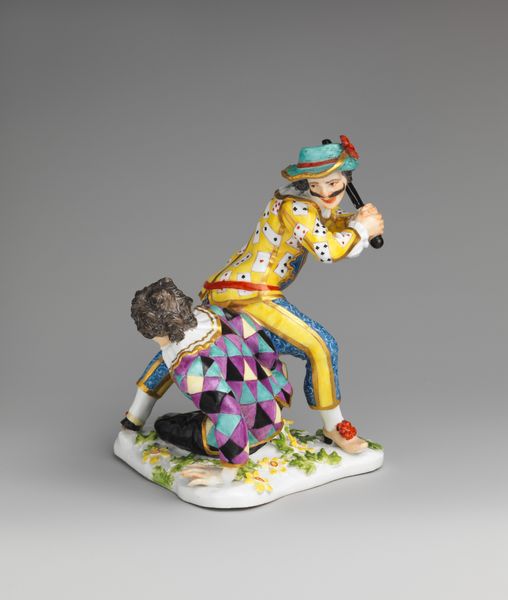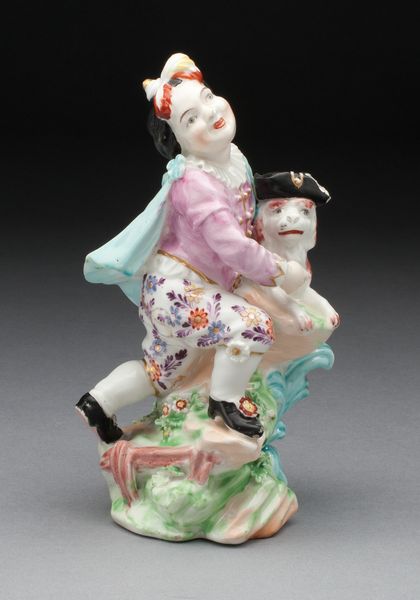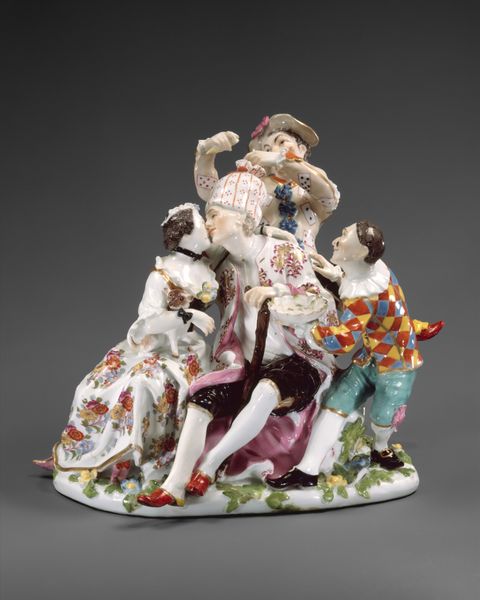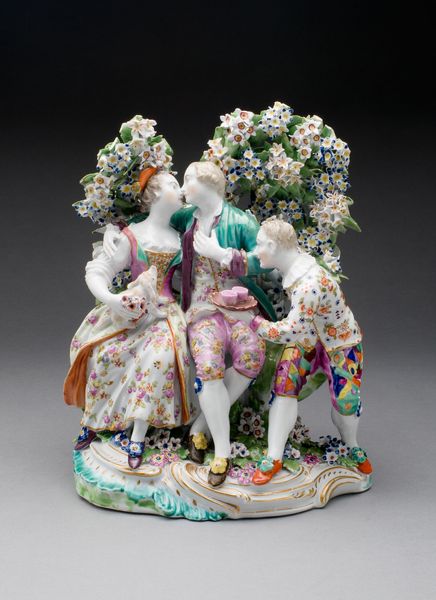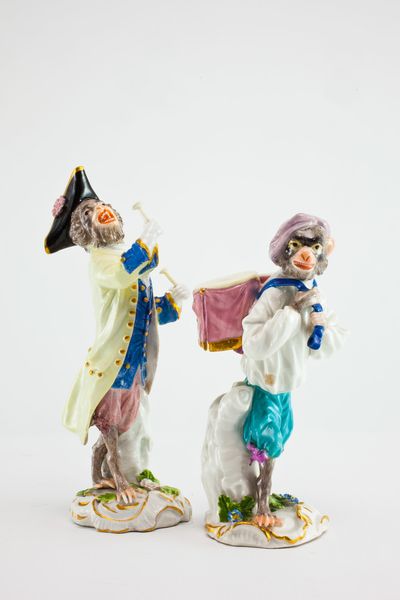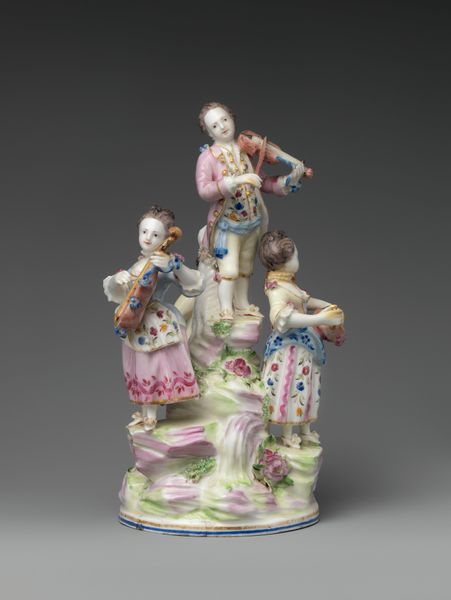
ceramic, porcelain, sculpture
#
ceramic
#
porcelain
#
figuration
#
child
#
sculpture
#
men
#
decorative-art
#
miniature
#
rococo
Dimensions: Height: 7 1/8 in. (18.1 cm)
Copyright: Public Domain
Curator: This exquisitely crafted porcelain sculpture, "Harlequin Family," was produced at the Meissen Manufactory sometime between 1733 and 1745. It is currently held in the collection of the Metropolitan Museum of Art. Editor: What immediately strikes me is the delicacy. It's petite, ornamental…almost frivolous. It screams Rococo! The materiality and those colors—how did they achieve that brilliance with porcelain? Curator: Precisely! Note the artist's skill in rendering the intricate patterns of Harlequin's costume, the diamond shapes, the checks. Observe the composition. The figures are arranged in a pyramidal form, creating visual harmony. There’s a rhythm inherent to the work through the patterning on their garments and accessories. Editor: But look beyond the pattern. Think of the artisanal labour involved. Each tiny piece individually crafted, painted, fired...consider the social stratification this embodies, the wealth needed to commission and display such a piece! Who had the leisure and resources for such intricate work? Curator: One cannot ignore, of course, the underlying commedia dell'arte theme—the playful Harlequin figure. This adds layers of interpretation. Harlequin is typically a mischievous figure; here he is domesticated, part of a family. Editor: But I am more taken by the physical act, the embodied labour of its creation. We must look at the conditions in which the porcelain workers toiled and consider what sacrifices were made to make pieces such as this that signify aristocratic patronage. How were the colors mixed? The molds designed? What of the workers health as they inhaled particles from this fine delicate material? Curator: Interesting… you’ve shifted my view to the craft itself! And to think, all this embodied work now exists preserved here within this sculpture’s harmonious design. The Rococo impulse captured by the Meissen Manufactory so elegantly persists, revealing, even in miniature, our ever complex world. Editor: Exactly! From raw material to precious object—a fascinating insight into not just aesthetics, but the society that shaped it.
Comments
No comments
Be the first to comment and join the conversation on the ultimate creative platform.

